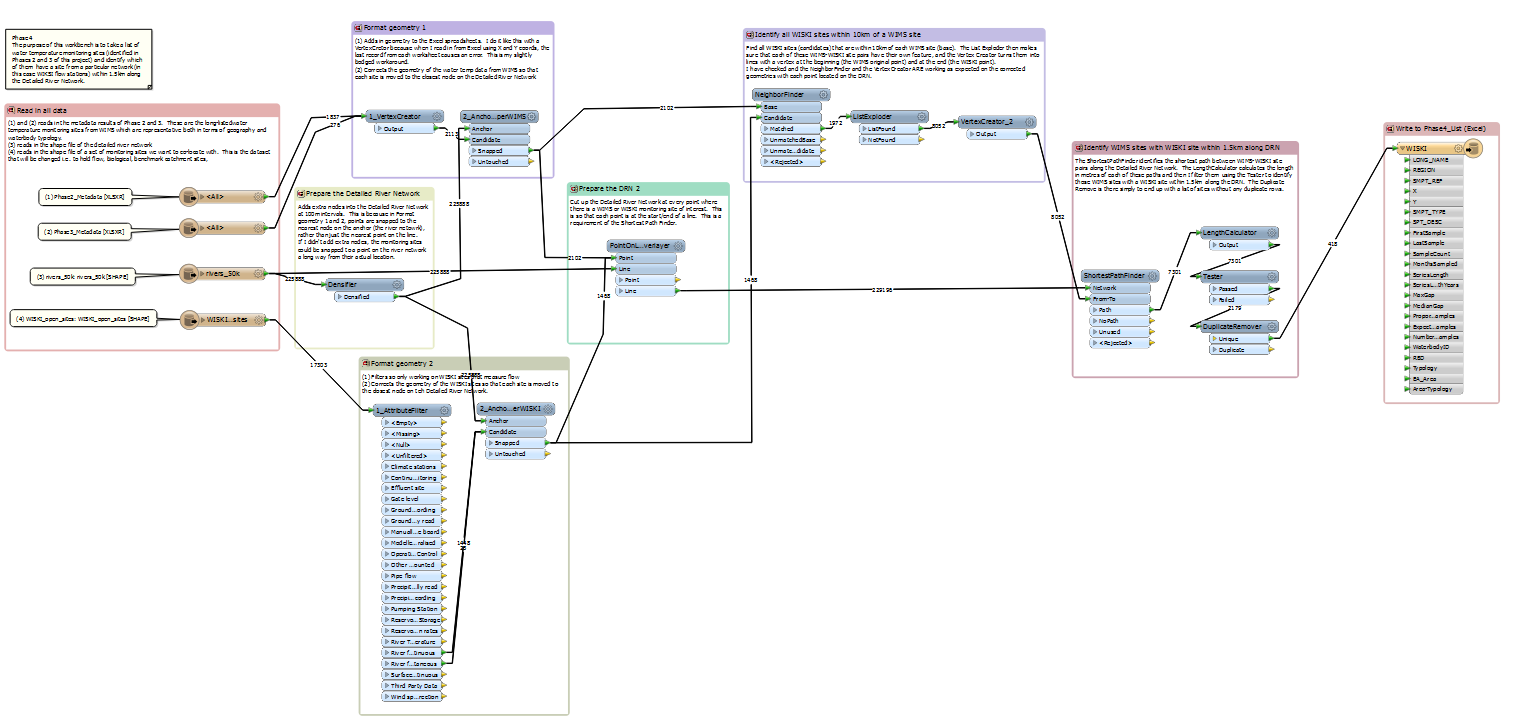I have roughly 2000 base sites (water temperature monitoring sites, from Excel with an x and y coord) and I would like to identify the nearest candidate site (from several thousand flow guaging stations, from a Shape file but will also need to do with Excel with x/y coords) that it is connected to via a network (rivers, Shape file) where the path along the network between the two is less than 3km. To complicate matters, neither the base or candidate sites sit nicely on the river network, but need to be 'snapped' to it in some way.
I've had a look at the ShortestPathFinder but didn't really understand how to get it to generate the shortest path between every base and every candidate, and it wouldn't do exactly what I want anyway.
Does anyone have any suggestions?
Thanks a lot, Alice





